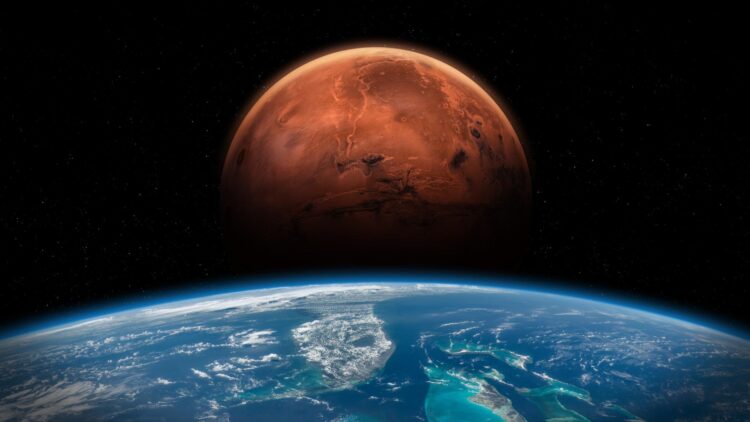Although it has taken a while from the first Mars landing to now to gather enough information about the red planet and get to know its orography, every year we get better and better information, and not just that, but we can use it to get a more complete picture of the planet’s geography. The latest discovery has been one made by NASA’s Mars Odyssey orbiter, which has been in play since 2001 and is still helping researchers make new discoveries. This one has to do with Arsia Mons, a massive Martian volcano towering over the landscape.
The picture that captured the volcano was taken on May 2, 2023 and it was a stunning image that showed the peak breaking through morning clouds just before sunrise, perfect for an Instagram grid. Standing over 19 kilometers tall, Arsia Mons is more than double the height of Mount Everest and ranks among the tallest volcanoes not just on Mars but in the entire known Solar System. And it is not alone. Arsia Mons is one of three giants that make up the Tharsis Mountains, a colossal volcanic region that is the Martian version of the Rockies
The new captivating images of Mars, Arsia Mons stuns with its impressive height
Since the Mars Odyssey orbiter was launched it has changed orientations a few times, which is what it has allied it to continue to capture new images that show more of the red planet. Of course, this does not happen immediately and from one day to the next, but the efforts that go into calibrating it are worth it once we see the results.
In 2023 the orbiter started doing 90-degree rolls, shifting its camera to look out toward the horizon instead of just straight down and the change opened up a new perspective of the Martian atmosphere and gave scientists a better view of how clouds, dust, and atmospheric layers behave as the seasons change.
The changes in position were a very good way to gather more information as well as cool pictures, as Michael Smith, a researcher at NASA’s Goddard Space Flight Center explained “We’re seeing really significant seasonal differences in these horizon images. They’re giving us new clues about how Mars’ atmosphere evolves over time,”
This new photo of Arsia Mons is especially interesting because it is the first time NASA has captured an image from the Martian horizon itself, from the side, which offers a completely new angle of the landscape. This has also helped them remark that the clouds around Arsia Mons are formed in a pretty interesting way. As air flows up the mountain’s slope, it cools and turns into vapor, kind of like how clouds form around Earth’s mountaintops.
These clouds tend to show up more in the morning as the atmosphere starts to warm up with the sunrise which is a small but telling detail about how Mars’ water cycle behaves, a key part of the new age of space exploration, as planetary scientist John Bridge explained in an interview with The Guardian “Understanding the water cycle in the atmosphere and near the surface will be an essential part of exploration missions, especially those where water becomes a local resource”
The most impressive data continues to be the fact that Arsia Moon is even bigger than we can comprehend. It is not just tall it is also quite wide and occupies a huge surface of the planet as well. For comparison, Mauna Loa in Hawaii, the largest volcano on Earth, stands at just over 4,100 meters above sea level. Arsia Mons is nearly five times that tall. That kind of scale helps explain why the Tharsis region is considered one of the most impressive volcanic zones in the Solar System.

